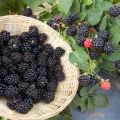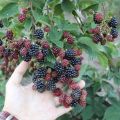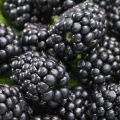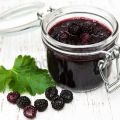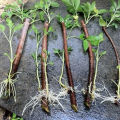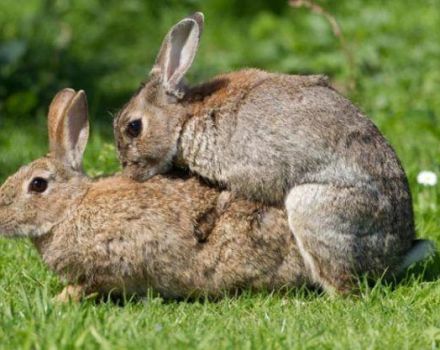Description and characteristics of the blackberry variety Karaka Black, planting and care
Caraca Black Blackberry is grown for its delicious berries. The shiny black fruit is the size of a matchbox and has a delicious taste. The variety is suitable for commercial cultivation. Ornamental bushes will decorate any amateur garden. Thanks to extended fruiting, there will be a fresh, healthy berry on the table.
The history of breeding the variety Karaka Black
A hybrid form of blackberry was obtained in New Zealand... Harvey Hall worked on it from 1982 to 2003. As parental forms, I used well-known varieties of blackberries of American selection:
- Aurora;
- Comanche.
The merits and demerits of culture
One of the disadvantages is thorns. Because of them, farmers are not very fond of the shape, as they complicate the care of blackberries. The disadvantages of Karaka Black include not stable immunity to anthracnose, the need for artificial shade in the heat. Young shoots of replacement and fruits suffer from direct sunlight.
The advantages of the variety include:
- large fruit sizes;
- high density of pulp, good transportability of berries;
- wonderful raspberry-blackberry taste;
- self-pollination;
- ripening early;
- prolonged fruiting;
- high productivity.
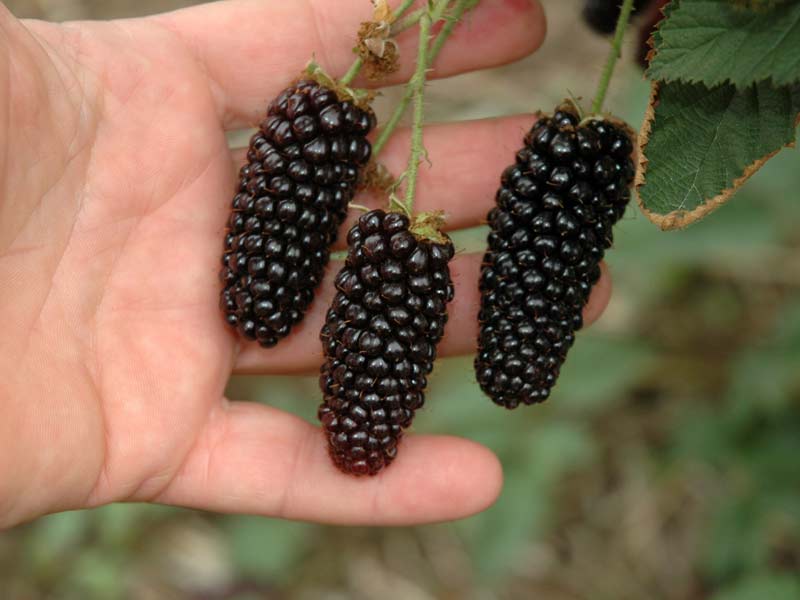
General description of blackberries
Fruit is the main advantage of Karak Black. It is thanks to their characteristics that the old variety is so in demand.
Berries
The fruit size is impressive. The length of the largest specimens reaches 5 cm, and the weight is up to 10 g or more. The taste depends on the climate. In southern gardens, the pulp contains more sugars. In temperate climates, Karak Black berries are less sweet.
The shape of the fruit is cone-cylindrical. The color changes as it matures:
- initially red;
- in technical ripeness, shiny, black;
- at full ripeness dull black.
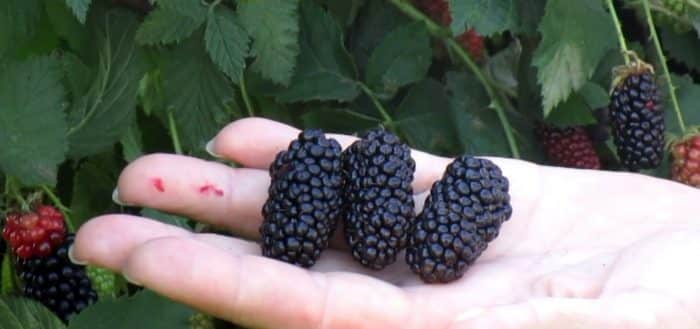
Bush and foliage
The bush is formed from creeping shoots. According to the Russian classification, Karaka Black is included in the dewdrop group. The length of the replacement shoots reaches 3-4 m. Individual branches reach 5 meters. The thorns are small and firm.
A large number of fruiting branches are formed on the shoots. In an adult plant, 3-6 fruits are formed in the brush, on young bushes - from 2 to 3 pieces.
The shape of the leaves is 3-5-lobed.Most of the plates are green, but yellow can be found. This shade is a varietal feature, and not a sign of disease.
Root system
The main part of the root system is located at a depth of 60 cm, the most powerful roots penetrate into the soil by 1 m. Root shoots are absent. This facilitates plant maintenance.
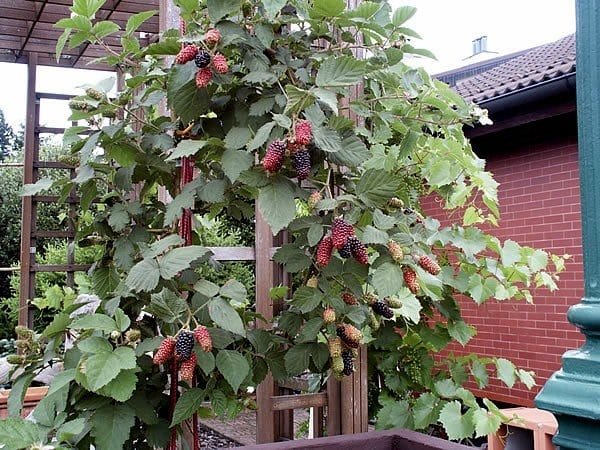
Specifications
Analysis of technical characteristics helps when choosing a new variety for the garden. You need to know the frost resistance of blackberries, the yield, the regions recommended for growing.
Fruiting dates and yield indicators
Karak Black berries are among the first to ripen. In southern latitudes, the first wave of berries is harvested on June 10-15. In temperate latitudes, harvesting begins in the last days of June. The fruiting period lasts from 6 to 8 weeks. Mature plants (3 years old and older) give a full harvest. 10-12 kg of berries are collected from one bush. On industrial plantations in New Zealand, 25 centners of marketable berries are obtained from 1 hectare.
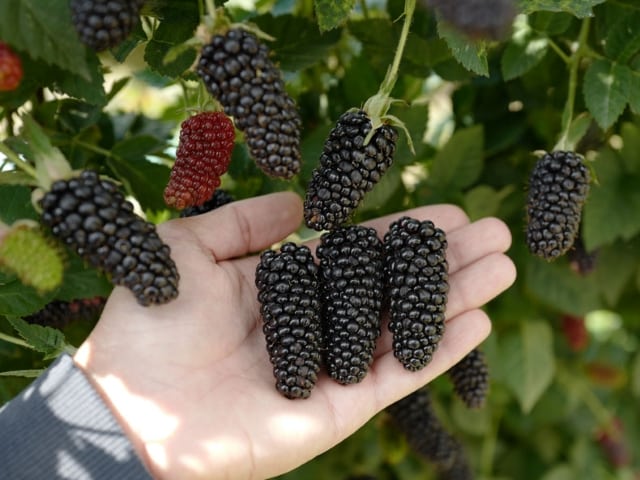
Berry tasting evaluation and application
Karaka Black berries are highly valued in the market. Their scope is wide. They are always in demand, as they are stored for a long time, do not wrinkle during transportation. The main uses of the blackberry Karaka Black:
- fresh consumption;
- deep freeze;
- preparations (juice, jams, preserves);
- winemaking.
Resistance to cold temperatures and infections
The form is not frost-resistant. Flower buds and shoots freeze if the temperature drops below -15 ° C. Immunity to most diseases is high, and preventive measures are required to maintain health.
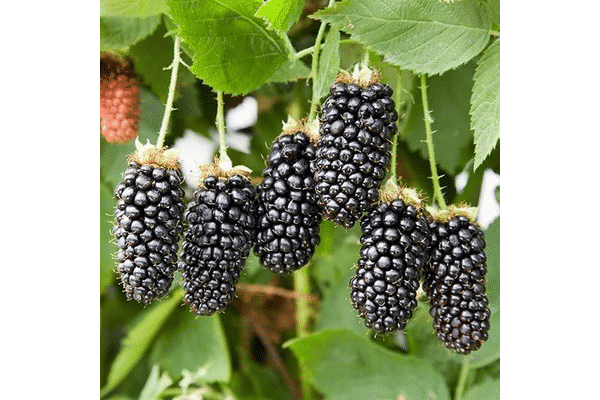
Recommended growing areas
Amateur gardeners grow Karaka Black in Siberia, the Urals, the Moscow region and, of course, in the southern regions. The frost resistance of shoots and buds is not high, therefore, even in warm climates, the bushes are sheltered for the winter.
Breeding methods
The variety is easily propagated by apical layers. If the shoots are not tied to a trellis, they take root on their own upon contact with the ground. Layers retain all varietal characteristics.
To replenish the collection, seedlings are purchased in nurseries.
Landing technique
Karaka Black in private gardens is planted at intervals of 3 m.On industrial plantations, a planting step of 1.5 m is allowed.
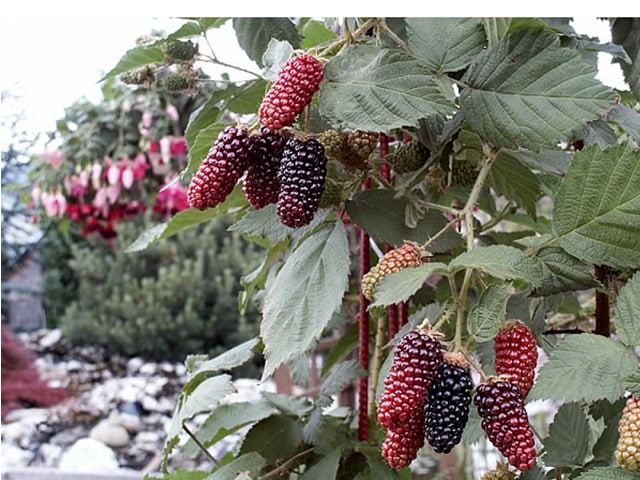
Preparation of planting material
Saplings with an open root system are kept in water for 12 hours. The plants in the container are watered before transplanting.
Choosing the best place
The sweet taste of blackberries depends on the light. In temperate latitudes, the bushes are planted in areas that are illuminated by the sun throughout the day. In southern latitudes, plantings in the midday heat are shaded.
Requirements for soil composition
Before planting, humus and long-acting mineral fertilizers are applied to the soil. Superphosphate and potassium nitrate are used. Improves structure, normalizes acidity:
- high-moor peat is added to alkaline and neutral soil;
- sand is added to clay soil, organic matter to carbonate soil;
- acidic soil is lime.
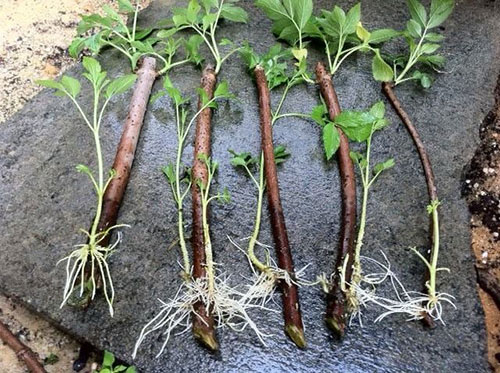
Dates and technology of disembarkation
In temperate latitudes, seedlings are planted in spring. The soil should warm up to a depth of 0.5 m. Autumn planting is practiced in the southern latitudes. Saplings planted in spring suffer from the heat and adapt longer. Blackberries are planted in pits (50 x 50 cm), the root collar is buried 1.5-2 cm:
- form a hole;
- watered;
- the trunk circle is mulched.
Specificity of care
Karaka Black planting care is standard. The necessary measures are carried out throughout the growing season.
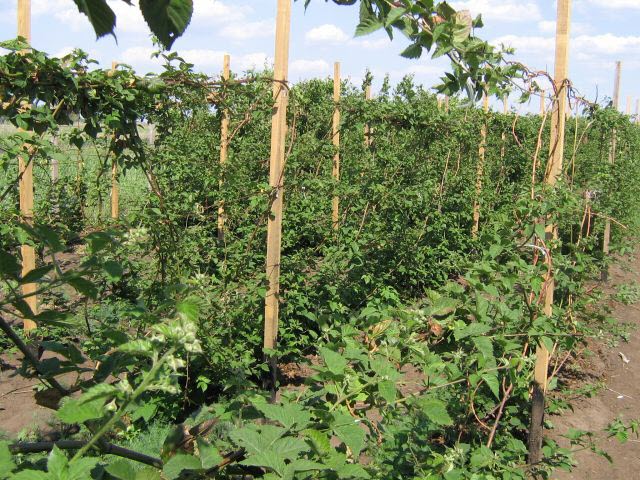
Irrigation, loosening and fertilization
| Event | Period | Description |
| Loosening | Early spring, autumn | |
| Mulching | Summer | Straw on acidic soil, humus, horse peat on neutral, alkaline |
| Root dressing | Before flowering | Carbamide, mullein infusion |
| During flowering | Complex mineral fertilizer | |
| In autumn | Potassium monophosphate |
Bush formation
In the fall, 2-year-old shoots are cut out (those that bear fruit). For 1 adult bush, 6 to 8 replacement shoots are left.

Garter to supports
To grow Karak Black, a trellis with a height of 1.5 (1.7) m is built. 3 rows of wire are pulled:
- 1st row - 0.9 m;
- 2nd row - 1.2 m;
- 3rd row - 1.5 m.
Treatment against diseases and pests
The main danger for the planting of Karaka Black is represented by fungal diseases:
- anthracnose;
- powdery mildew;
- gray rot (botrytis).
The main causes of diseases: flaws in agricultural technology, damp, cool weather. The appearance on the leaves, shoots of replacement of gray spots with a purple or purple border indicates an outbreak of anthracnose. Botrytis can be diagnosed by spots, dry leaves covered with spores.
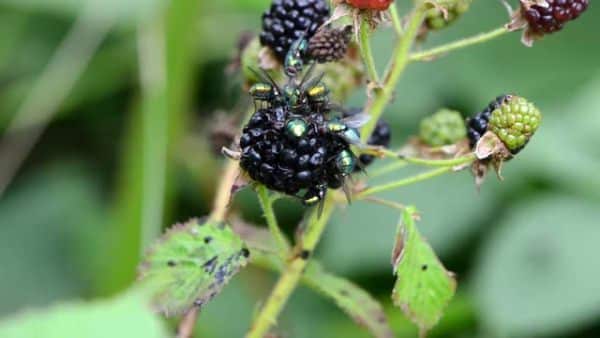
The causative agent of gray rot can destroy a young bush in a week. Fruits affected by the fungus are not suitable for consumption. Powdery mildew activates in warm, humid weather. It affects berries, young leaves, growth point. The first sign of infection is white bloom.
An approximate plan of measures for the control and prevention of fungal diseases:
- in early spring, the introduction of organic and mineral fertilizers;
- plantation sanitation;
- spraying with fungicides before flowering, when the shoots reach a length of 30 cm, after the final harvest.
The drugs used are: Fundazol, copper sulfate (5%), Topaz, Kuproksat.
How to prepare for winter
Flexible annual shoots are tied in bunches, laid on the ground or bent down, fixing with staples. The bushes of Karak Black are thrown with straw, hay, spruce branches or use non-woven covering material.
It is pulled on arcs in 1-2 layers. It is not inferior in efficiency to natural materials. In Siberia, blackberries overwinter in trenches. They do not dig them deeply. Shoots are laid in them, covered with a layer of covering material. Snow is thrown in in winter. A good harvest is guaranteed if there are Karaka Black bushes in the garden.


